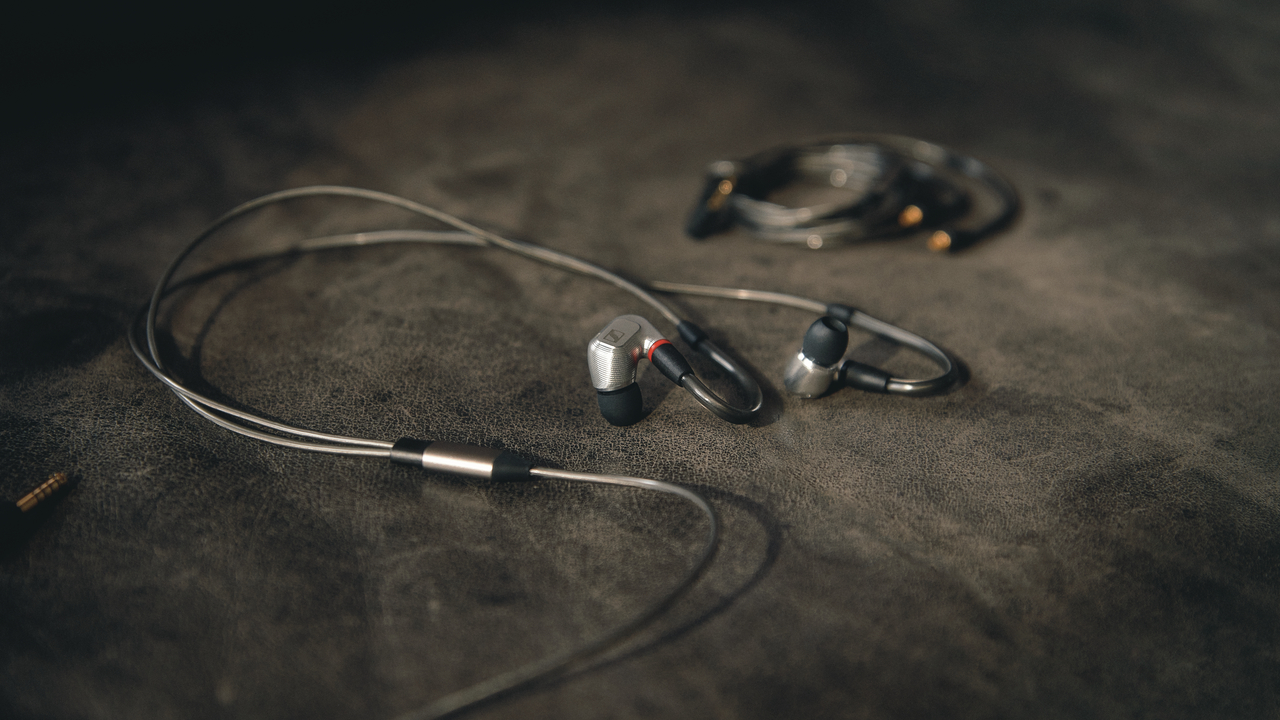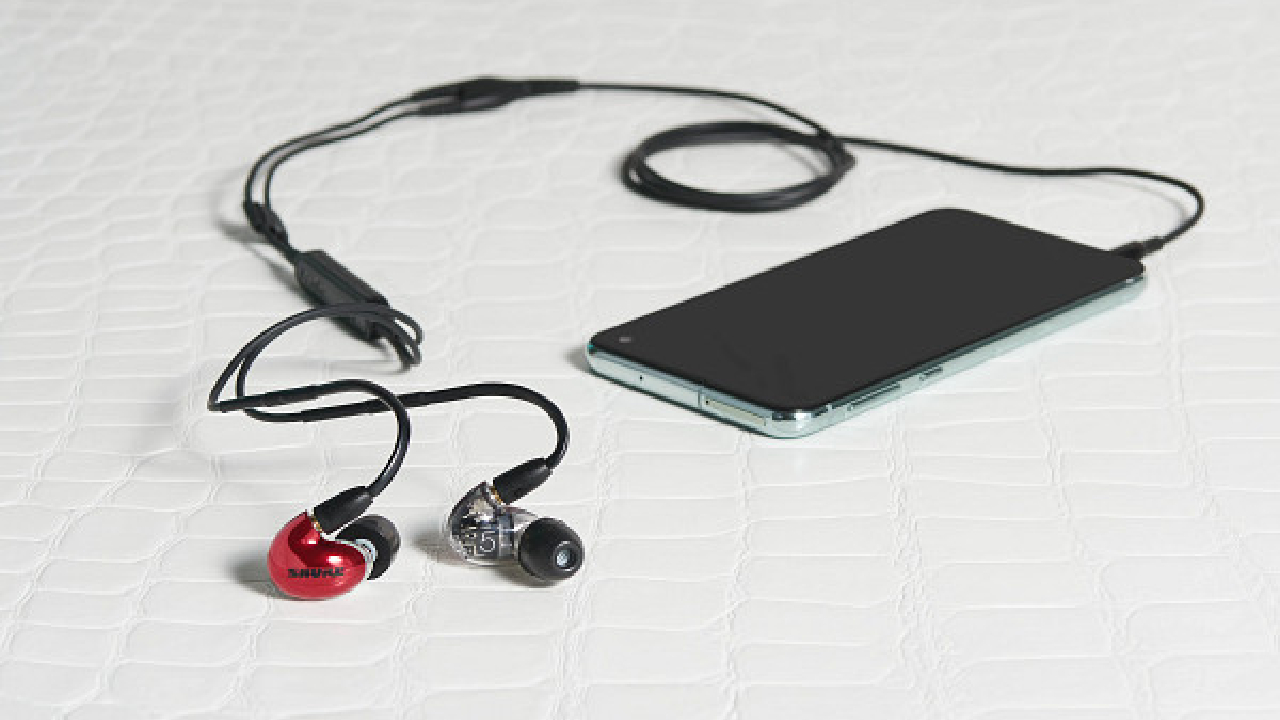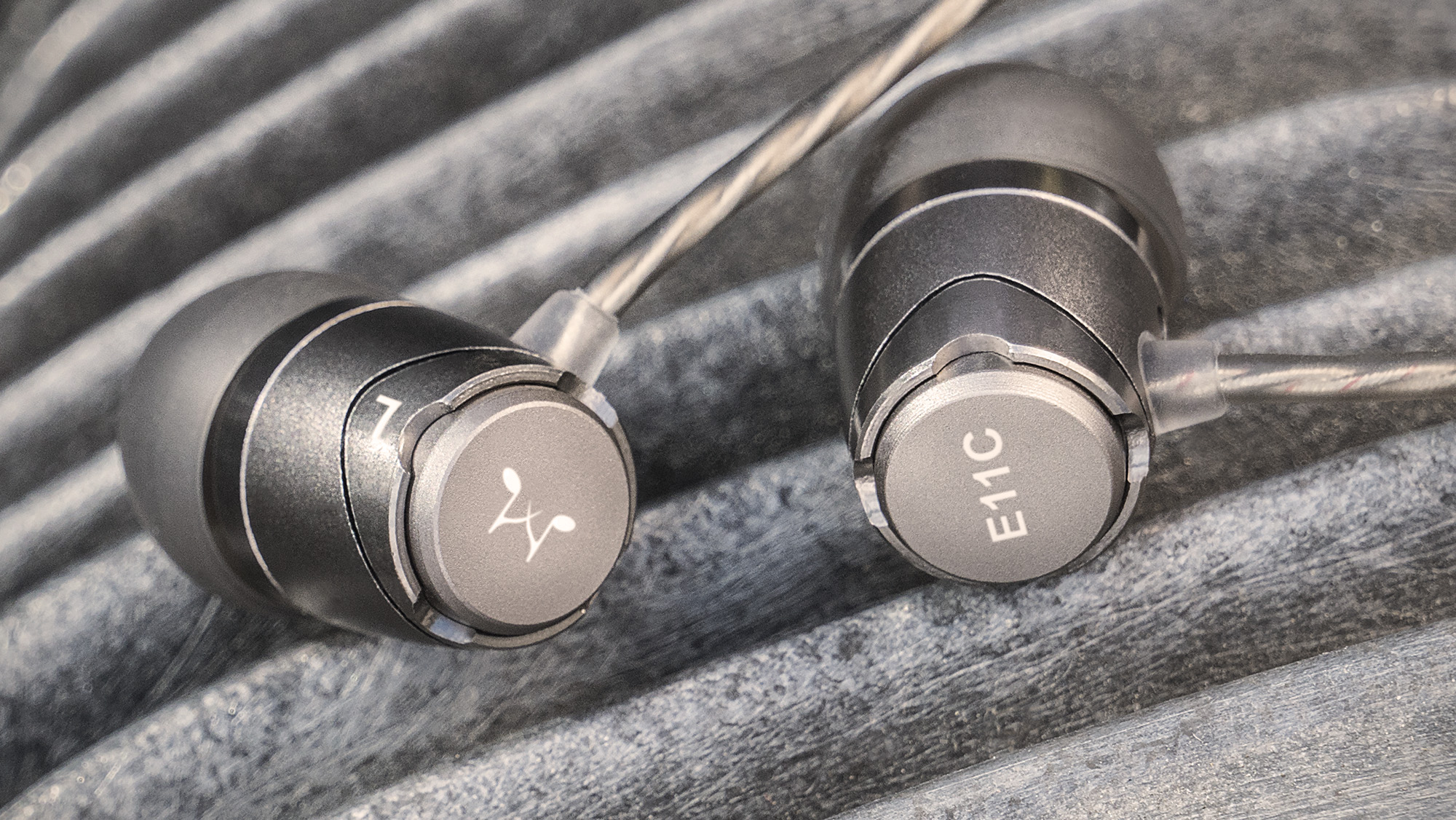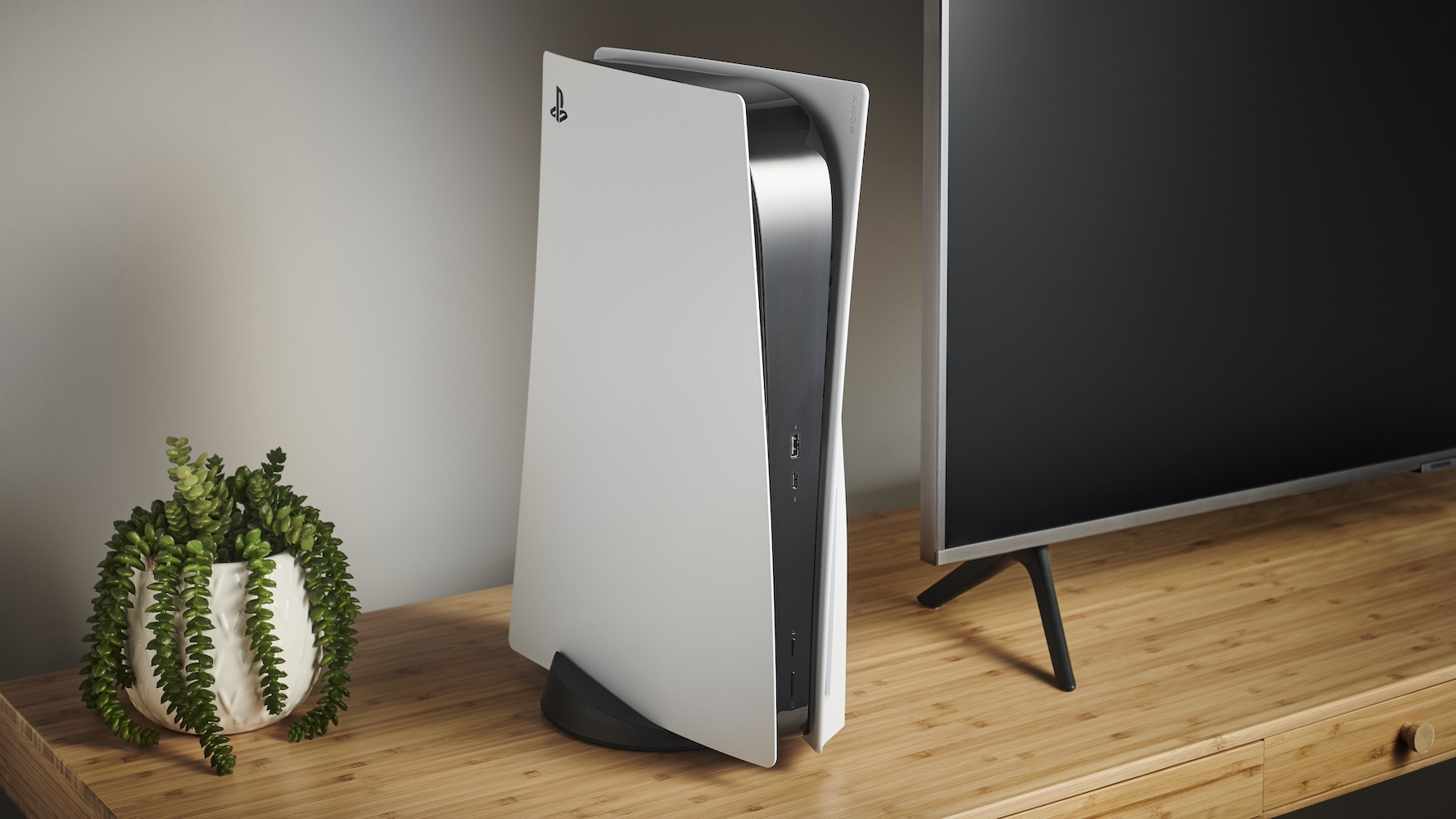What are IEM headphones? How do they compare to regular earbuds?
We get you clued up on in-ear monitors

Use these high-end in-ear headphones with an outboard DAC and good quality files for the best results.
(Image credit: Sennheiser)You'll almost certainly have seen the term 'IEM' appear sporadically across the pages – virtual or in-print – of What Hi-Fi? It's a term with which many are surely familiar, although the number of people who could point to exactly what the term stands for, let alone what it means in practical terms, maybe a little lower than you'd think.
If you're au fait with all there is to know about IEMs, feel free to pat yourself on the back. If you're still a little confused about what they are specifically, how they differ from 'standard' in-ear headphones/earbuds, not to mention the benefits and drawbacks that they bring, we have all the answers you'll ever need.
Well, most of them, anyway.
What are IEMs?
IEMs stands for "in-ear monitors". There we go, you've already passed Module One on this extensive hi-fi course and know more than 90 per cent of punters on the street. That's in-ear monitors, i.e. headphones that fit inside the ear canal rather than on the outer cavity. More on that below.
In-ear aspect aside, it's worth noting the term 'monitors', i.e. something designed to keep track of, observe or record a given thing – in this case, music. That leads us to the provenance of IEMs which, rather than being conceived explicitly as an item for the mass market of hungry audio consumers, were in fact designed to be used for musicians and artists during recordings or live performances. Instead of relying on on-stage monitor speakers to hear other aspects of a track, you could simply pipe sound directly into your ears to keep you in the sonic loop while on-stage or in a recording studio.
If you're wearing a pair of IEMs, for instance, you can have a stereo mix of instruments in one ear and, say, other vocals or your own performance in the other, rather than merely blasting a wall of backing sound from a stage monitor system. That represented an enormous boon for performers at the time. It still does.
The point is that these are often performance-grade products designed by and for audio engineers and musicians to receive faithful musical feedback. This original provenance continues to shape almost all aspects of the IEMs we know today, including their form, functionality and, of course, sound, the last of which we'll get to in a second. As we'll see below, the picture is a little more complex than it first appears.
IEMs vs earbuds: what's the difference?
In essence, there is none. Well, that's not exactly true, but there's no definitive, strict categorisation that distinguishes an IEM from a wired pair of in-ear headphones. All of the facets listed below are elements of an IEM, but they aren't a checklist of what they must have to be classified as such. You could buy a pair of cheap running shoes or a pair ten times more expensive, but they're both essentially doing the same things in the same way. The difference is that the pricier pair is more likely to be aimed at a professional or dedicated runner, while the cheaper pair is aimed at your casual, part-time jogger.
In essence, an IEM is pretty much any in-ear pair of headphones with a pro-market connotation. They're usually built for the professional market, they usually have a robust, durable finish to keep them from being damaged while performing, and they usually fit deep inside your ear canal, probing deeper than many standard earbuds. Many standard "consumer" earbuds rest less intrusively in your ear canal, providing a little less isolation and often a looser seal than your standard IEM.
In terms of design, there are no hard and fast rules, but most IEMs use memory foam ear tips which can be placed upon or around a small nozzle. Many higher-end in-ear monitors opt for balance armature drivers rather than the dynamic drivers you'll almost always find in most mainstream earbuds, using an armature placed between a pair of magnets that causes a diaphragm to move, such as are found in the five-star Shure Aonic 5.
That isn't always the case, though. Dynamic drivers can still be found within many IEMs (and in-ear headphones, of course), while planar magnet models use a thin diaphragm coil to provide reduced levels of distortion. Other IEMs can even utilise electrostatic drivers which pack in a thin diaphragm this time suspended between charged plates. Although rare, some more high-end monitors do boast fancy electrostatic tech.
Most IEMs are wired, naturally, whereas headphones and earbuds can come in wired or wireless form, and the majority of monitors will tend to have a wire that is designed to train over the top of your ear to keep it fastened in place. Again, it's not a hard and fast rule, but it does tend to be how most manufacturers recommend you wear their products.

Do IEMs sound as good as headphones?
This, of course, is like asking if a cricket ball is better than a tennis ball, or if a Land Rover four-by-four is better than a VW hatchback. There's probably an objective answer lurking under multiple hypotheticals, but mainly, these things are dictated by what you want, what you like, and what you're using your monitors for, not to mention what you're comparing them with.
Placed side-by-side with standard earbuds, be they wireless or wired, it's possible to make general statements about the differences in the respective sound profiles offered. While you can tend to get a bit of extra bass from that deep fit profile, most decent IEMs are usually designed to be balanced, analytical operators that reward anyone who likes their sound overflowing with detail and texture. They're pretty immersive, too, once again owing to how deep they sit within the ear canal.
If you're asking if they sound better than over-ear headphones, that's again a question of taste and other factors. Over-ear headphones will often offer a more spacious soundstage with a fuller bass profile, with a sound that feels a little less direct literally as the driver is not firing as closely to your ear. There are so many factors at play here, as a cheap or poor pair of headphones won't outclass a high-end or premium pair of IEMs. Bluetooth models, too, often sacrifice detail and fidelity for the convenience of not dealing with wires.
IEMs which use balanced armature drivers tend to sport a sound that benefits from a lack of resonance or distortion, leading to greater clarity and audio purity and an aversion to synthetic tones. The Shure Aonic 5, for instance, set a decent benchmark at their premium level, offering, as we stated in our review "a wonderful sense of clarity" that "shower(s) the listener with detail", while "vocals sound superb, rich in detail and natural expression".
All other things being equal, though, IEMs tend to be detailed, musically adept and authentic, with plenty of solid reproduction across the frequencies and an emphasis on audio clarity. That said, some users can find them a little over-analytical, even clinical, and you won't necessarily get that breadth and weight of sound that you'll receive from a bulky pair of wired over-ears.

How to wear IEMs
Without making you feel like you're being taught to suck eggs, there are a number of steps you need to take to ensure that you're listening to your in-ear monitors correctly.
First, actually make sure you have all of the components of the monitors – including the tips (sometimes called "sleeves" or "adapters"), the wires and the user manual – all present and correct. That manual is important, as it will usually set out how to mount your ear adapters to the earphones, which ones are right for you and how to keep them clean and hygienic.
Select the tips that are the right size for you – often this can be done by a bit of trial and error. Sennheiser recommends rolling its memory foam tips between your fingers until they're small, and then inserting the earphones and holding them there for at least 15 seconds so that the foam can expand within your ear cavity. Don't push the tips any further than they're willing to go, and don't try to force a large adapter into your ear holes. Start small and, if needed, work your way up one by one.
Regarding the wire, most manufacturers, including Shure and Sennheiser, recommend wearing the cable over and behind the ear. With the Shure Aonic 5, for instance, the cable can be tightened by raising the provided cinch. This is slightly down to personal preference, but you'll usually aid a more secure fit and prevent any extraneous wires trailing where they shouldn't if you opt for an over-ear approach.
Are IEMs bad for your ears?
In a word, no. In slightly more words, maybe, but just like anything else, it all depends on how you use them.
As we've said above, IEMs do poke down deeper into the ear canal than your standard in-ear headphones, meaning that you need to be a little bit more careful when popping them in initially. Make sure that you've selected the appropriate tip and, if possible, read the guidance on the box/website from the manufacturer regarding your ideal tip size, finding the best seal and ensuring that you're operating at the right levels of sensitivity.
Yes, IEMs could cause hearing damage if you listen to loud music at high volumes for extended periods, but that's the case with pretty much any type of headphone, speaker or other audio device you care to mention. The same general, common-sense rules apply: don't listen for over-extended periods at a time, don't blast loud music into your ears frequently and don't force ear tips down further than they're happy going.
Are IEMs good for gaming?
They certainly can be, for several reasons.
Firstly, IEMs are lightweight and, if you're wearing them correctly, fit snugly in your ear, meaning that no amount of cheering/head movement/controller smashing should be able to dislodge them. If you're a keen gamer but don't like the bulky, over-ear models fancied by many of the pros, IEMs could be a really smart choice.
Almost all IEMs are wired, too, and that means low latency rates. Lots of brands and tech companies, including Qualcomm, are trying to get Bluetooth gaming sets up to speed with their wired counterparts, but at the moment, wires still rule supreme. If you want audio that's snappy and responsive, in-ear monitors make sense.
Plus, they're likely going to sound good. As explained above, that sharp, crisp, slightly analytical sound is no bad thing if you're a serious gamer, letting you hear every drop of a bullet's shell case or the footstep of an enemy player just before he slots you as you hide in your favourite camping spot during a Call of Duty session.
They've usually got all of the features you need, too. Most models come with a mic - either built-in or detachable – for in-game voice chat, as well as in-line controls for adjusting things like volume on the fly.
MORE:
These are the best in-ear headphones: budget to premium
Want to block out the world? Here's our best noise-cancelling headphones
MP3, AAC, WAV, FLAC: all the audio file formats explained
Struggling to hear the difference between hi-res and non-hi-red audio? The problem with hi-res audio is how you might be listening to it
Get the What Hi-Fi? Newsletter
The latest hi-fi, home cinema and tech news, reviews, buying advice and deals, direct to your inbox.

Harry McKerrell is a senior staff writer at What Hi-Fi?. During his time at the publication, he has written countless news stories alongside features, advice and reviews of products ranging from floorstanding speakers and music streamers to over-ear headphones, wireless earbuds and portable DACs. He has covered launches from hi-fi and consumer tech brands, and major industry events including IFA, High End Munich and, of course, the Bristol Hi-Fi Show. When not at work he can be found playing hockey, practising the piano or trying to pet strangers' dogs.
